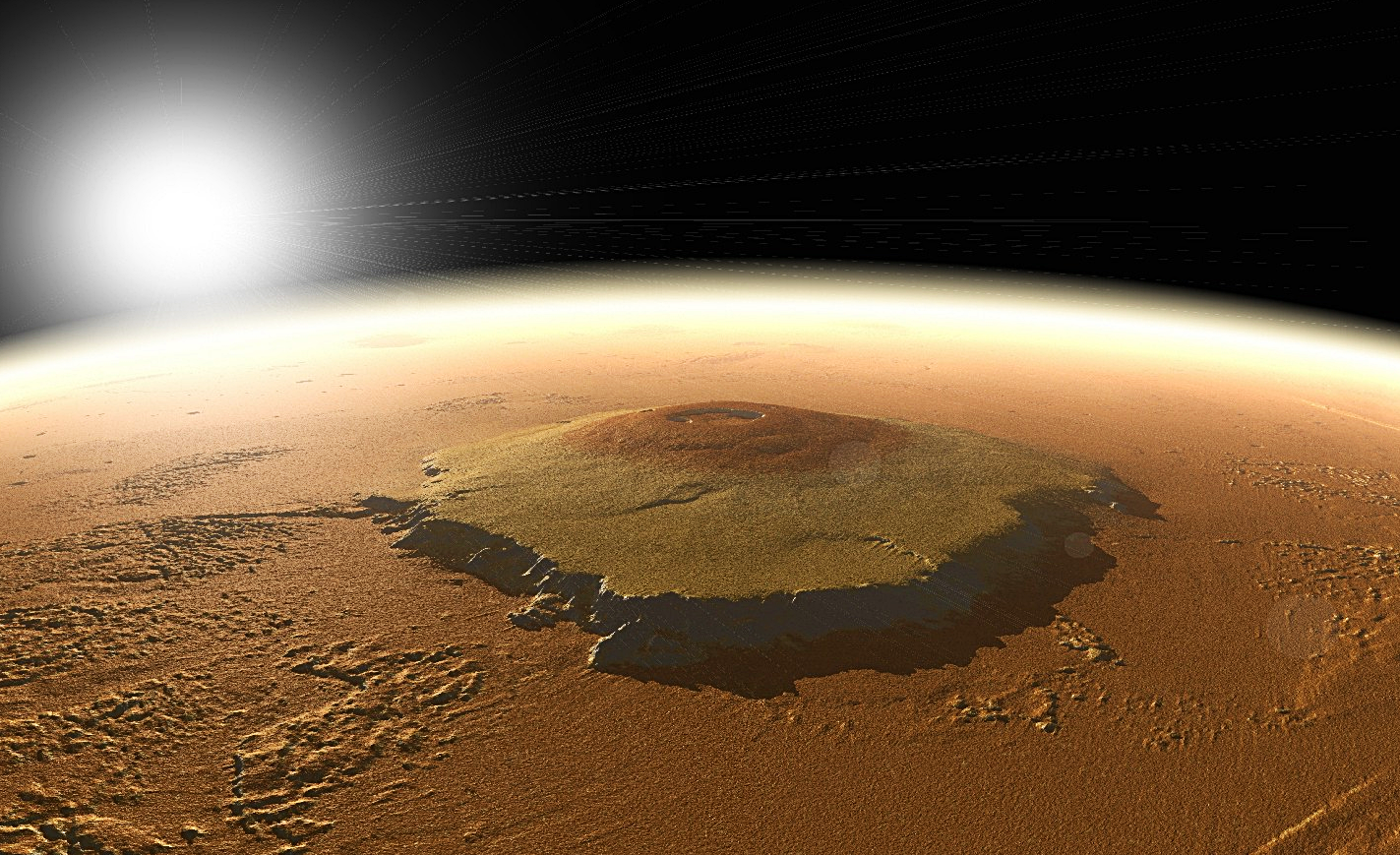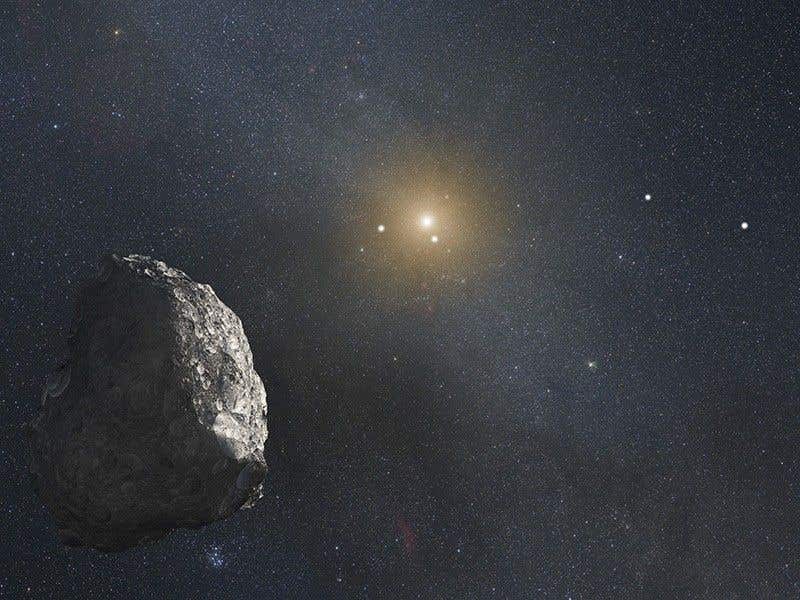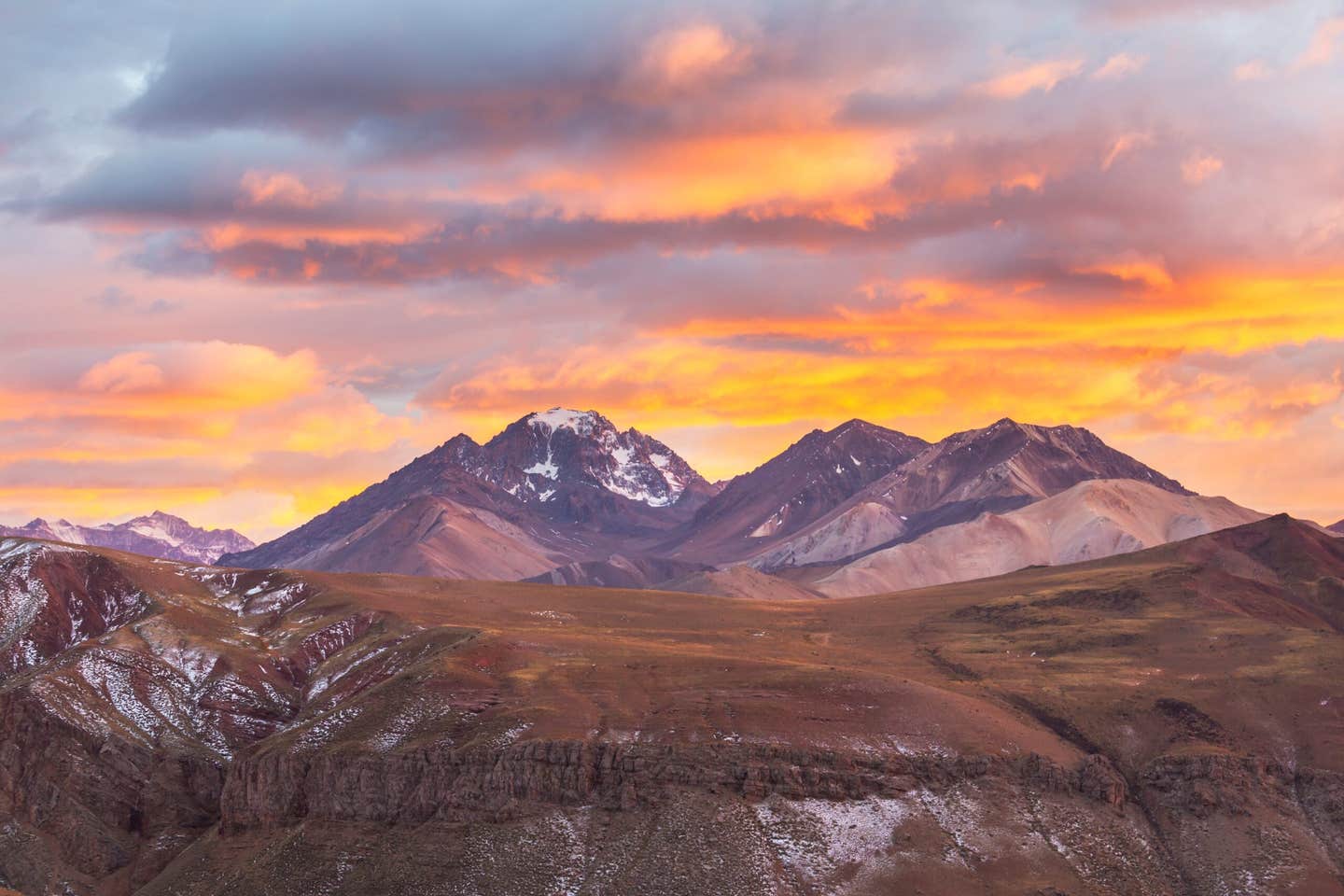Scientists discover mysterious structures buried beneath Mars’ surface
New studies reveal dense structures and active mantle processes beneath Mars’ surface, influencing Olympus Mons and northern polar regions.

These formations are hidden beneath thick, smooth sediment layers thought to be remnants of an ancient seabed. (CREDIT: NASA/MOLA Science Team/O. de Goursac, Adrian Lark)
Recent studies of gravity variations on Mars have uncovered dense, large-scale structures beneath sediment layers where an ancient ocean once existed.
This research, combining models and data from multiple missions, also suggests that active processes in the Martian mantle may be responsible for elevating Olympus Mons, the largest volcano in the Solar System. The findings were presented at the Europlanet Science Congress (EPSC) in Berlin by Bart Root from Delft University of Technology (TU Delft).
Mars is known for its concealed structures, such as ice deposits, but the features discovered in the northern polar plains are still a mystery. These formations are hidden beneath thick, smooth sediment layers thought to be remnants of an ancient seabed.
“These dense structures could be volcanic in origin or could be compacted material from ancient impacts. We’ve identified about 20 features of varying sizes scattered around the area near the north polar cap, one of which even resembles the shape of a dog,” said Dr. Root. “There seems to be no evidence of these features at the surface. However, gravity data offers us an intriguing glimpse into the older history of the northern hemisphere of Mars.”
To investigate these hidden formations, Dr. Root and his colleagues from TU Delft and Utrecht University analyzed tiny deviations in the orbits of Mars satellites. These deviations helped them map the planet’s gravity field, which offered clues about the internal mass distribution. The gravity data, along with new information from NASA’s InSight mission about the Martian crust and mantle dynamics, allowed researchers to create a global density map of Mars.
The density map reveals that the northern polar features are denser than their surroundings by about 300-400 kg/m³. But the study didn’t stop there; it also shed light on the structures beneath Tharsis Rise, the region that houses Olympus Mons.
Related Stories
While volcanoes are generally dense, Tharsis stands much higher than the average surface of Mars and is surrounded by a region with comparatively weak gravity. This gravity anomaly is puzzling when you consider only the Martian crust and upper mantle.
Dr. Root and his team suggest that a light mass, about 1,750 kilometers wide and located 1,100 kilometers below the surface, may be causing the Tharsis region to rise. This phenomenon could be due to a massive plume of lava deep within Mars, making its way upward toward the surface.
“The NASA InSight mission has provided us with crucial new data about Mars’ rigid outer layer. This forces us to rethink our understanding of how Olympus Mons and its surrounding region are supported,” said Dr. Root. “It suggests that Mars might still be experiencing active movements in its interior, which could affect and even create new volcanic features on the surface.”
In addition to these discoveries, Dr. Root is part of the team advocating for the Martian Quantum Gravity (MaQuIs) mission. The MaQuIs mission aims to use technology developed for GRAIL and GRACE—missions that mapped the gravity fields of the Moon and Earth, respectively—to map Mars’ gravity field in detail.
“Observations from MaQuIs would allow us to explore the Martian subsurface more thoroughly,” explained Dr. Lisa Wörner of DLR, who also presented on the MaQuIs mission at EPSC 2024. “This would help us uncover more about these hidden features, study ongoing mantle convection, and better understand surface processes like seasonal atmospheric changes or the detection of groundwater reservoirs.”
Through the combined efforts of missions like InSight and potential future endeavors like MaQuIs, our understanding of Mars is evolving rapidly. These gravity variations are painting a picture of Mars as a planet with a complex history—and possibly an active geological future.
Whether it’s ancient impacts or ongoing volcanic processes, Mars continues to reveal secrets buried beneath its surface, offering tantalizing hints about what might still be happening deep within the planet.
Note: Materials provided above by The Brighter Side of News. Content may be edited for style and length.
Like these kind of feel good stories? Get The Brighter Side of News' newsletter.



